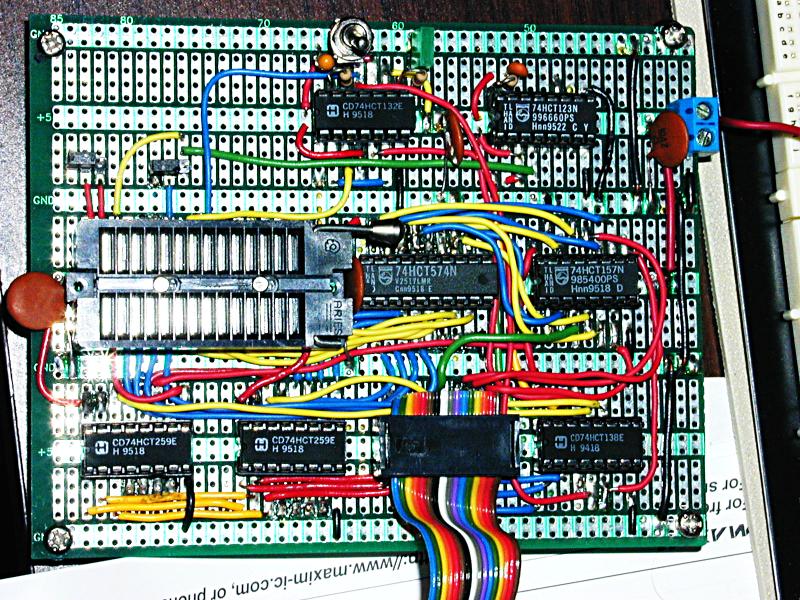
- Use Ohm's law.
- Find the resistance of a material
- Interpret circuit diagrams
- Solve simple circuits

| This is a "need to know" for the first week's labs. By the end of this you should be able to do the following
|
Current: the rate at which charge moves through a wire (C s-1), but this is so important that it gets its own name
1 Ampere = 1 Amp = 1 C s-1.
It is very useful to think of current as the flow of a liquid. We can think of wire consisting of a large number of charges, which all flow with the same speed.
If there are
|
 |
Total charge in this piece of wire is δQ = nqLA |
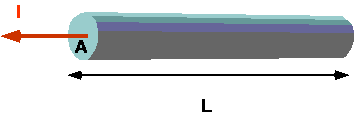 |
I = δQ = nqLA = nqAv
δt L/v
| Note (very important!) you cannot distinguish a positive charge moving in one direction with a negative charge moving in the other: qv is a constant. |  |
| or even a mixture | 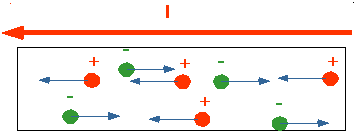 |
| What makes a current flow? Only thing that can move charges is an electric field.The wire acts as a "pipe" for the electrons to move in. If there is a field inside a wire, this means there must be a potential difference (or "voltage") along the wire. |  |
V = I R
| Actually, this is always true, by definition: what makes it useful is that for most metals, the resistance R is a constant. Metals conduct equally well in all directions: the resistance is just 1/slope of curve (why?). A diode is a device designed to conduct current in one direction only. | 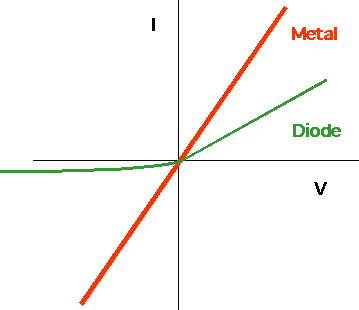 |
Units: if I is measured in amps, V in volts then R is in ohms Ω
R = ρ L
A
where ρ is the resistivity of the material (units are ohm m).
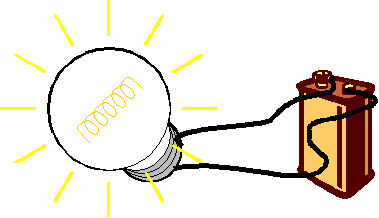 |
..The simplest possible circuit is just a source of EMF and a resistor: e.g. a battery and a light |
| However, circuits like this are always represented by schematics: standard notation: | 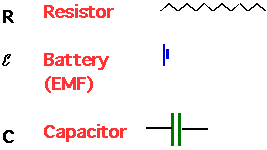 |
| So the above circuit becomes | 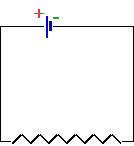 |
| Kirchoff's Point Law: the algebraic sum of currents into a junction is 0. (algebraic sum means current in is positive, current out is negative)
(What goes in must come out!) I₁ - I₂ -I₃ = 0 |
 |
| Kirchoff's Loop Law: the sum of P.D.'s round any circuit is zero (What goes up must come down! |  |
e.g. Kirchoff's 1st Law says
that the algebraic sum of currents into a junction is 0I₁ - I₂ -I₃ = 0 (algebraic sum means current in is positive, current out is negative) but this is almost obvious if we think of the charge as a liquid: what flows in must flow out |
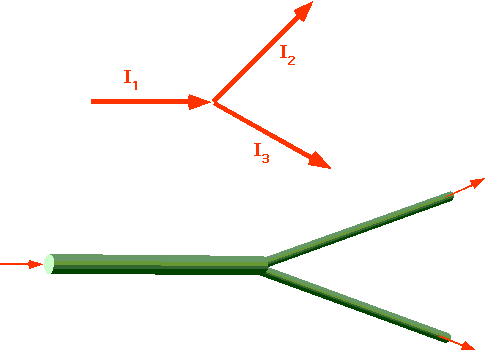 |
(What happens if you guess the direction of a current wrong? Nothing: you just get a negative result)
|
A positive charge passing through the battery would have a potential increase of Ɛ, followed by a potential drop of IR. Hence Ɛ-IR = 0 or I = Ɛ/R (which is obvious!). |
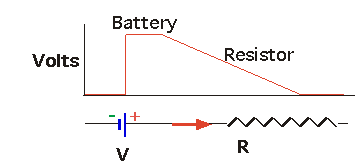 |
All devices actually measure a very small current: galvanometer consists of coil suspended in magnetic field: torque corresponds to current, measuring (say) 1 mA. How do we measure large currents or large voltages with such a device?


****Yes, I know that we don't have to do this explicitly these days: however what a multi-meter does is to switch resistances electronically.